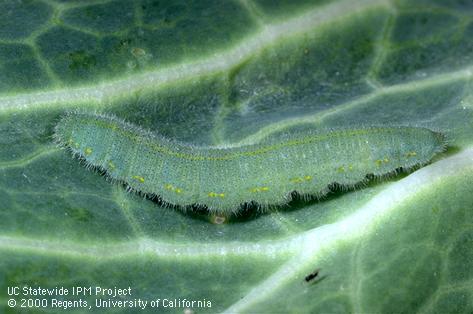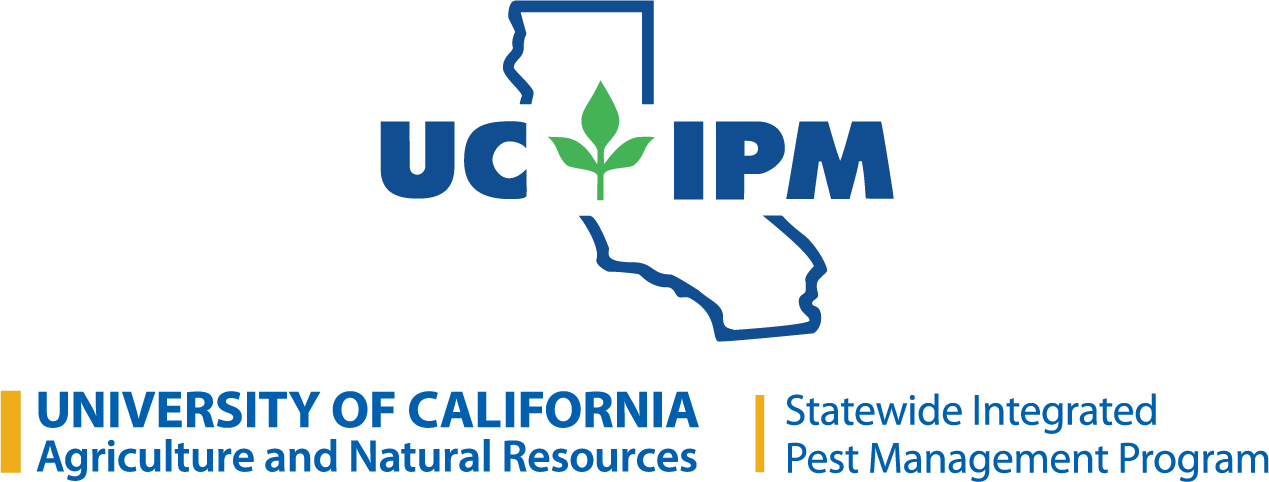Identification
Cabbageworm larvae are green and very hairy, with an almost velvetlike appearance. Older larvae may be up to 1-inch long and often have one faint yellow orange stripe down their backs and broken stripes along the sides. Adults are white with one to four black spots on the wings.

Life Cycle
Adult cabbage butterflies lay eggs singly on leaves. Eggs are pale yellow to orange and are shaped like a football standing on its end. Older larvae may be up to an inch long. Compared with other caterpillars, cabbageworms move slowly and are sluggish but they feed voraciously on both the outer and inner leaves, often feeding along the midrib, at the base of the wrapper leaves, or boring into the heads of cabbage. After 2 to 3 weeks of feeding, larvae pupate attached by a few strands of silk to stems or other nearby objects. Pupae are green with faint yellow lines down the back and sides; there is no spun cocoon. The cabbageworm is active throughout the year in California.

Damage
Cabbageworm larvae chew large, irregular holes in leaves, bore into heads, and drop greenish brown fecal pellets onto edible portions of the leaf.
Solutions
Handpick. Natural control by virus and parasites, such as such as tachinid flies, can sometimes be effective. Bacillus thuringiensis or spinosad are very effective. Egg laying can be prevented by using floating row covers.
